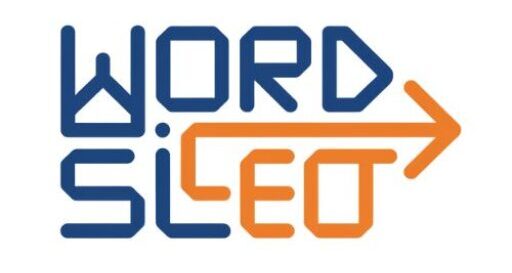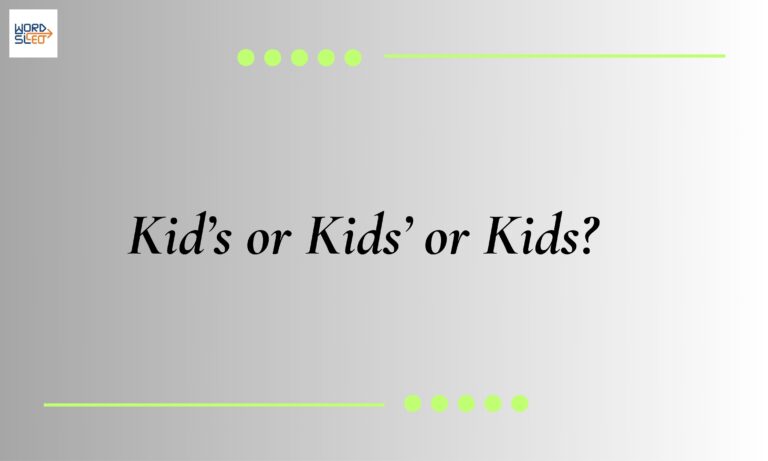The word kid means a child, but adding an apostrophe changes its meaning. Kid’s is singular possessive, meaning something belongs to one child (e.g., “The kid’s toy is broken”). Kids’ is plural possessive, meaning something belongs to multiple children (e.g., “The kids’ school is big”).
Kids is just the plural form of “kid” and does not show possession (e.g., “The kids are playing outside”). Using the correct form makes writing clear and correct.
The Basics: Kid’s, Kids’, and Kids
The word kid refers to a child. However, when possessive forms are involved, the apostrophe placement changes the meaning.
- Kid’s – Singular possessive (belonging to one child).
- Kids’ – Plural possessive (belonging to multiple children).
- Kids – Plural form (more than one child, no possession).
Each form is used differently in writing and speaking.
Kid’s (Singular Possessive)
Kid’s means something belongs to one child. The apostrophe before “s” shows possession. For example, “The kid’s book is on the table” means the book belongs to one child. Another example is, “I found the kid’s jacket on the chair.”
This form is used when talking about one child’s things. “The kid’s lunch is ready” means the lunch belongs to one kid. Always use kid’s for a single child’s belongings.
Usage and Examples of Kid’s in Sentences
- The kid’s toy is on the floor.
- I saw the kid’s backpack in the classroom.
- The kid’s lunch box was left on the table.
Scenario Examples
- A teacher finds a single child’s notebook: “This is the kid’s notebook.”
- A mother talking about her child’s shoes: “My kid’s shoes are too small.”
Kids’ (Plural Possessive)
This form is used when something belongs to multiple children. The apostrophe after the “s” indicates that possession applies to more than one child.
Usage and Examples of Kids’ in Sentences
- The kids’ playground is newly renovated.
- All the kids’ backpacks were lined up in a row.
- The kids’ laughter filled the park.
Scenario Examples
- A teacher referring to multiple students’ books: “The kids’ books are on the shelf.”
- A park manager talking about a play area: “The kids’ section is closed for maintenance.”
Kids (Standard Plural)
Kids is the plural form of “kid” and means more than one child. It does not show possession. For example, “The kids are playing outside” means many children are playing. Another example is, “She loves teaching kids at school.”
This form is used when talking about a group of children. “The kids are excited for the trip” means all the children are happy. Always use kids when referring to multiple children without showing ownership.
Usage and Examples of Kids in Sentences
- The kids are playing outside.
- She bought gifts for all the kids.
- The kids love going to the zoo.
Scenario Examples
- A parent talking about their children: “I love my kids so much.”
- A teacher addressing students: “All kids must be seated before the lesson begins.”
How to Form Possessive Versions of Kid
To show possession, add an apostrophe in the right place. For one child, use kid’s (e.g., “The kid’s toy is missing”). This means the toy belongs to a single child.
For more than one child, use kids’ (e.g., “The kids’ room is messy”). The apostrophe after “s” shows that something belongs to multiple children. Remember, kids (without an apostrophe) is just the plural form and does not show ownership.
- Singular Possessive: Add an apostrophe + “s” (kid’s).
- Plural Possessive: Add an apostrophe after “s” (kids’).
- Plural Form: No apostrophe (kids).
Examples of Kid in Context: Singular vs. Plural Possessives
When talking about one child’s belongings, use kid’s. For example, “The kid’s backpack is heavy.” This means the backpack belongs to one child. Another example is, “I packed the kid’s lunch for school.”
For more than one child’s belongings, use kids’. For example, “The kids’ toys are everywhere.” This means the toys belong to multiple children. Another example is, “The kids’ playground is big.”
- Singular Possessive: The kid’s book is red. (One child owns the book.)
- Plural Possessive: The kids’ books are red. (Multiple children own books.)
- Plural Form: The kids are reading books. (No possession, just multiple children.)
Practical Applications of Kids, Kids’, and Kids
Understanding these forms is useful in everyday communication, writing, and formal documents. Proper usage ensures clarity and accuracy in grammar.
- In Schools: Teachers use these terms correctly when labeling students’ belongings.
- In Parenting: Parents use them when referring to their child’s or children’s possessions.
- In Writing: Authors and journalists apply these rules to maintain proper grammar.
Key Takeaways on Kids, Kids’, and Kids
Kid’s is used when something belongs to one child (e.g., “The kid’s book is on the table”). Kids’ is used when something belongs to multiple children (e.g., “The kids’ toys are in the box”).
Kids is just the plural form and does not show possession (e.g., “The kids are playing outside”). Always check the apostrophe placement to avoid mistakes. Kid’s has an apostrophe before “s” for one child, while kids’ has it after “s” for many children.
Frequently Asked Questions
When should I use Kid’s instead of Kids’?
Use Kid’s when referring to something belonging to one child and Kids’ when something belongs to multiple children.
Is “Kids” ever used as a possessive form?
No, “Kids” is just the plural form and does not show possession.
Can I use Kid’s to refer to a group of children?
No, Kid’s is only for one child’s possession. For a group, use Kids’.
Why is the apostrophe after the “s” in Kids’?
The apostrophe is placed after “s” because it shows possession by multiple children.
How can I remember the difference between Kid’s and Kids’?
Think of Kid’s as “one child’s” and Kids’ as “several children’s.”
Conclusion
Understanding Kids, Kids’, and Kids helps in using the correct form in writing and speaking. Kid’s is for one child’s belongings, Kids’ is for multiple children’s belongings, and Kids simply means more than one child without possession.
Using the right form makes sentences clear and correct. Always check the apostrophe placement to avoid confusion. Learning these small grammar rules improves communication and writing skills in everyday life.

David is a talented content writer and digital marketer with expertise in SEO, social media management, and online marketing.

